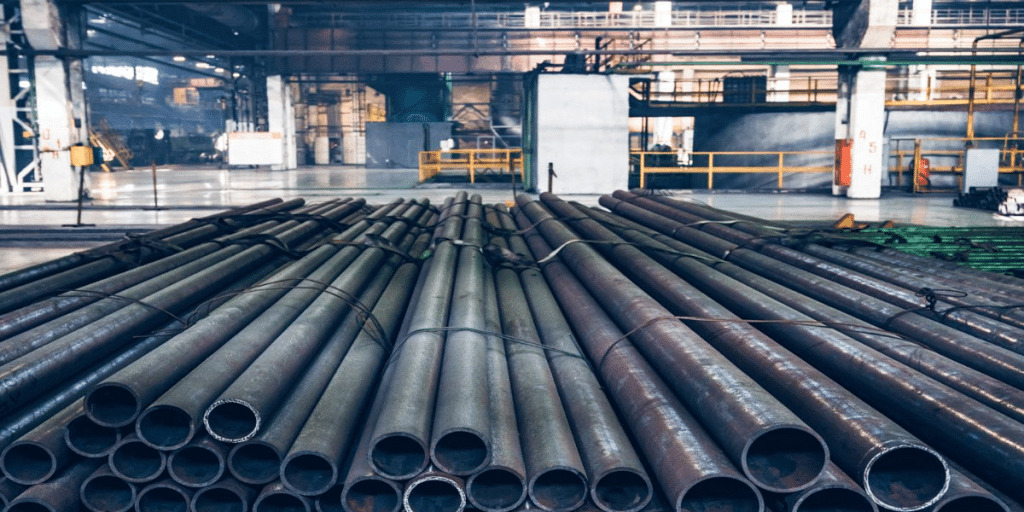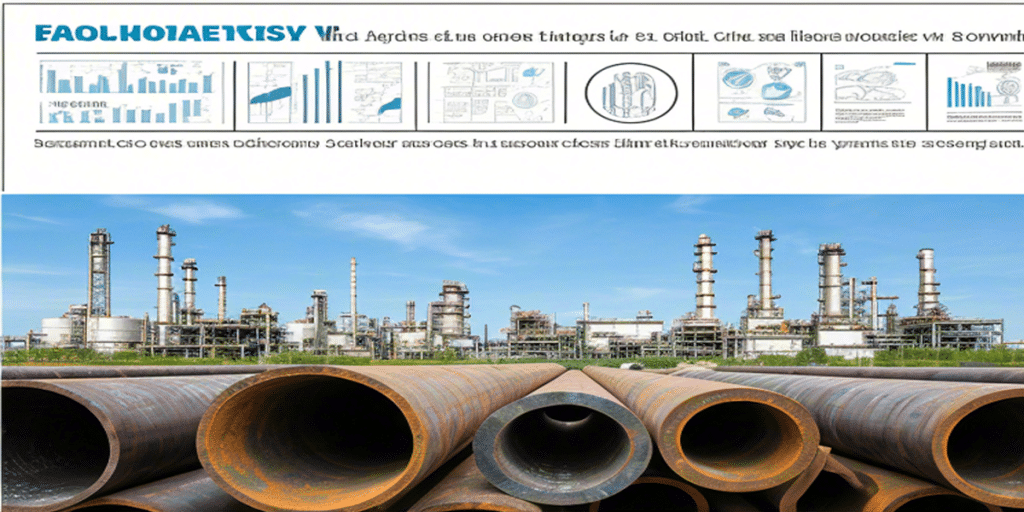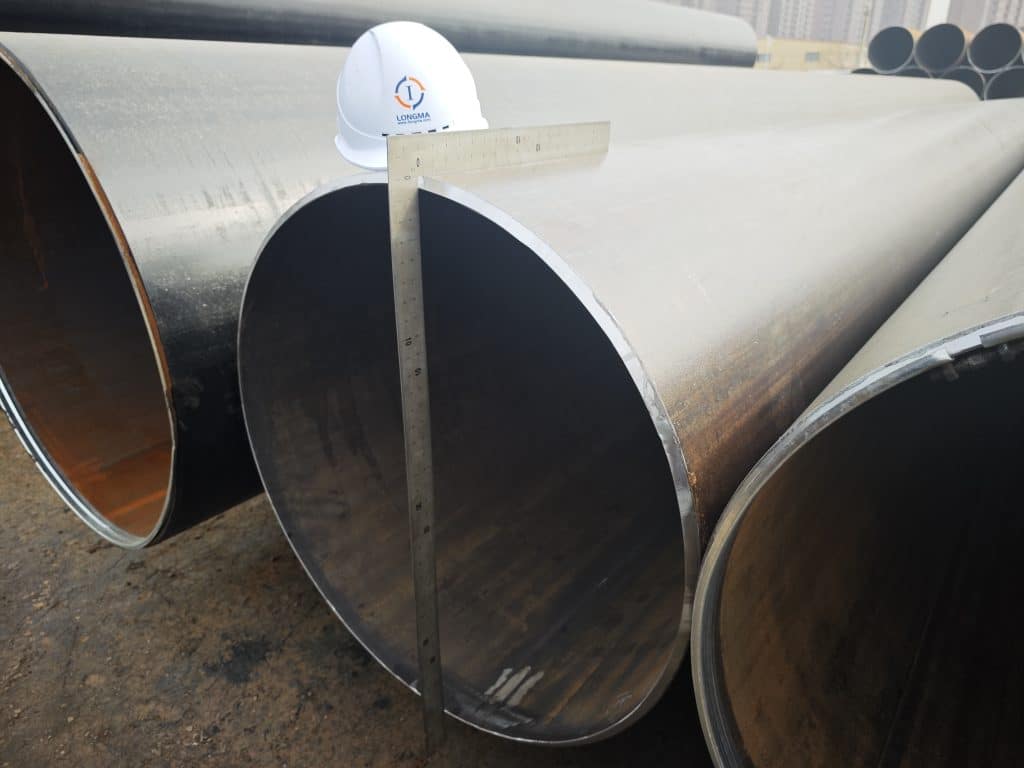ASTM A53 standard welded steel pipes (especially ERW electric resistance welded pipes and LSAW longitudinal submerged arc welded pipes) are widely used in various industrial fields such as fluid transportation, structural support, machinery manufacturing, energy engineering, and fire-fighting pipe networks, thanks to their high cost-effectiveness, good weldability, and wide size range. Combining standard parameters and industry application cases, this article will systematically analyze the top five typical uses of ASTM A53 welded steel pipes to help you quickly determine their suitability.
What Are ASTM A53 Welded Steel Pipes?
ASTM A53 is a standard developed by ASTM International (American Society for Testing and Materials), covering seamless pipes (Type S), electric resistance welded pipes (Type E), and furnace-welded pipes (Type F). Among these, ERW and LSAW are the most common welding processes currently.
- Scope of Application: Pipes for transporting steam, water, gas, and air, as well as general mechanical and structural purposes.
- Common Grades: Grade A, Grade B (Grade B has higher strength and is more widely used in industrial fields).
- Size Coverage: NPS 1/8 to 26, with wall thicknesses following Schedule 10, 40, 80, etc.
The Top 5 Industrial Uses of ASTM A53 Welded Steel Pipes
- Fluid and Gas Transmission Pipes
- Typical Applications: Water supply pipes, natural gas transmission, heating, ventilation, and air conditioning (HVAC), steam pipelines.
- Advantages:
-
- ERW process ensures stable welds, making it suitable for medium and low-pressure fluids.
- LSAW process enables the production of large-diameter, thick-walled pipes to meet the transmission needs of municipal and energy projects.
- Practical Cases: Urban water supply networks, district heating pipelines, factory steam pipe networks.
- Structural and Construction Support
- Typical Applications: Steel structure frames, factory columns, bridge supports, scaffolding.
- Advantages:
-
- A53 welded pipes can be welded and bent, facilitating quick on-site installation in construction projects.
- They are more economical than seamless pipes, significantly reducing project costs.
- Practical Cases: Steel structure frames of large logistics and warehousing centers, guardrail pipes of pedestrian bridges across rivers.
- Machinery and Equipment Manufacturing
- Typical Applications: Agricultural machinery, automotive components, drive shafts, support arms for construction machinery.
- Advantages:
-
- The standardized pipe dimensions allow for easy mechanical processing.
- Grade B has higher strength, making it suitable for withstanding medium mechanical loads.
- Practical Cases: Oil line pipes for tractors, pipe fittings for construction vehicle chassis.
- Energy and Industrial Engineering
- Typical Applications: Power plant condensate pipes, low-pressure transmission pipes in petrochemical plants, mine ventilation pipes.
- Advantages:
-
- ERW is suitable for conventional process pipelines;
- LSAW can meet the large-diameter requirements of large-scale energy projects.
- Practical Cases: Circulating water pipes in thermal power plants, process gas pipes in petrochemical plant workshops.
- Fire-Fighting and Safety Systems
- Typical Applications: Automatic sprinkler systems, fire hydrant pipe networks, fire risers.
- Advantages:
-
- A53 pipes can be provided with a galvanized layer to enhance corrosion resistance and extend service life.
- They meet the requirements for medium-pressure pipes in fire-fighting projects and offer high cost-effectiveness.
- Practical Cases: Fire-fighting pipes in high-rise office buildings, fire-fighting loop networks in industrial plants.
Key Parameters of ASTM A53 Welded Steel Pipes
| Item | Grade A | Grade B |
| Yield Strength (min) | ~205 MPa | ~240 MPa |
| Tensile Strength (min) | ~330 MPa | ~415 MPa |
| Size Range | NPS 1/8 – 26 | NPS 1/8 – 26 |
| Manufacturing Process | ERW / LSAW | ERW / LSAW |
| Key Application Areas | General structures | Industrial and transmission pipelines |
Note: Parameters are sourced from public data of the ASTM A53/A53M-22 standard.
How to Select ASTM A53 Welded Steel Pipes?
- Clarify the Application Purpose: Determine if it is for fluid transmission, structural support, or machinery manufacturing.
- Select the Grade: Grade A is optional for general structures; Grade B is recommended for industrial transmission.
- Determine the Manufacturing Process: ERW is recommended for small and medium-diameter pipes; LSAW is recommended for large-diameter/thick-walled pipes.
- Choose Anti-Corrosion Measures: Select black pipes, galvanized pipes, or external anti-corrosion coatings based on the application scenario.
LONGMA — Your Trustworthy Partner
As a professional steel pipe manufacturer with over 20 years of experience, LONGMA specializes in the production of ERW and LSAW round pipes, and strictly adheres to international standards such as ASTM A53, API 5L, and EN 10219:
- Complete Product Range: Offers a full range of specifications from NPS 1/8 to large-diameter thick-walled pipes.
- Quality Assurance: Equipped with comprehensive non-destructive testing, hydrostatic testing, and weld heat treatment processes.
- Stable Lead Times: Maintains regular inventory of common Grade B pipes with Sch40/Sch80 wall thicknesses to support fast delivery.
- Project Support: Provides customers with selection guidance, technical consultation, and material test certificates (MTCs) compliant with EN 10204 3.1.
Contact us now to get selection advice and quotations for ASTM A53 welded steel pipes, and request a collection of industry application cases to help your project be implemented more quickly.





